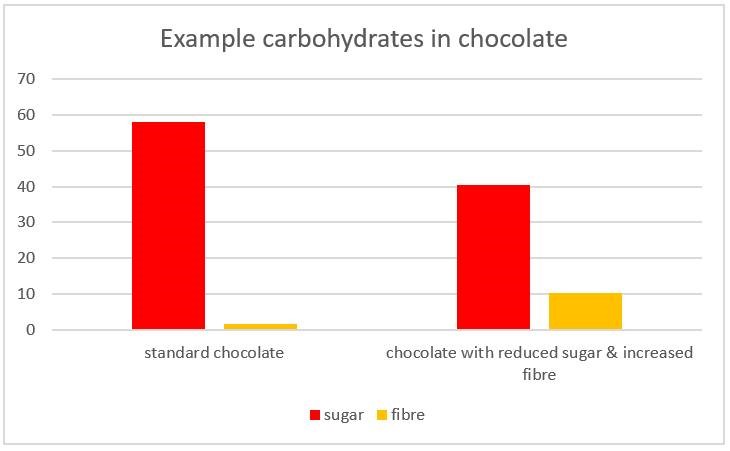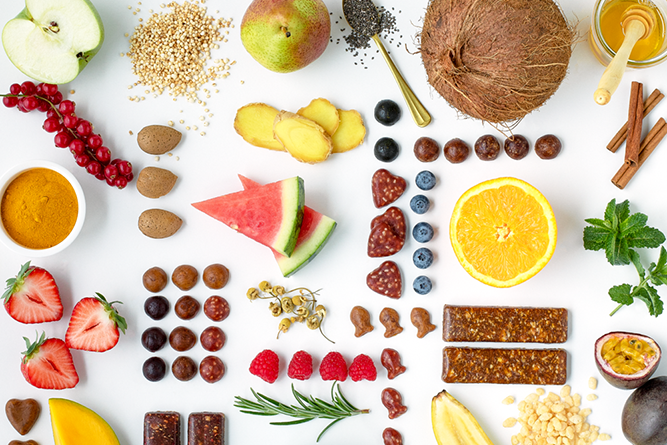Sugar reduction and fiber enrichment are two of the most influential forces shaping food innovation - and they’re more connected than many realize. Understanding this link opens new opportunities for creating products that meet consumer expectations for health, taste, and transparency.
Why sugar reduction remains a top priority
Reducing sugar continues to dominate consumer health goals worldwide. Surveys consistently show that consumers view sugar as a key contributor to weight gain and actively seek products with less of it. Many prefer to cut sugar rather than replace it with artificial sweeteners, driving demand for natural, clean-label solutions.
This shift has made “no sugar” and “no added sugar” among the most prominent health claims across food and beverage categories, ranking as the leading claim in soft drinks and among the top in packaged foods, alongside “whole grain”. (Euromonitor, Top Five Trends in Health & Wellness, 2025).
Global Drivers: Health and Regulation
The push for sugar reduction isn’t just consumer-led. Governments worldwide are reinforcing the trend through sugar taxes, front-of-pack labeling, and stricter nutritional standards. Stricter rules on sugar and additives are steering innovation, especially in soft drinks, sweet snacks, and cereals, as brands reformulate for transparency and nutrient density. (Euromonitor, Top Five Trends in Health & Wellness, 2025).
Innovation beyond sweeteners
Replacing sugar is complex - especially in foods where sugar provides bulk, texture, and stability. Successful solutions balance health, taste, and naturalness. Brands are increasingly using fiber-based bulking agents and natural sweeteners like stevia to reduce sugar while maintaining functionality and sweetness. Mintel also highlights fiber and next-generation stevia as key disruptors in sugar reduction strategies, offering both sweetness and nutritional benefits.
At TAURA, we’ve developed a Reduced Sugar Toolbox designed to help manufacturers achieve these goals. It combines fruit sweetness with advanced sugar replacement technologies to deliver sugar reduction without compromising taste or texture - ideal for bakery, snacks, breakfast cereal and confectionery applications. Health synergies are also possible, for example by incorporating prebiotic fibers as an option within the toolbox, supporting gut health and digestion alongside sugar reduction.
Learn more here: TAURA Reduced Sugar Toolbox
What’s the link between sugar and fiber?
Fiber and sugar are both carbohydrates. It is possible to use fiber to replace some of the sugars in food products. The amount of fiber added to a product has an immediate effect on the amount of sugar. More fiber equals less sugar. This has a positive effect on Nutrient Profiling Systems, like Nutriscore, HFSS score or traffic light system.

How this works in practice
- In chocolate
Mondelez patented a process using soluble corn fiber to reduce sugar in chocolate. In trials, this approach achieved around 30% sugar reduction while increasing fiber content from 1.7 g/100 g to 10.2 g/100 g by replacing nearly 20% of the sugar, demonstrating how fiber can deliver both sugar reduction and added nutritional value (Source: Confectionery News). - In cookies
Several years ago, our team demonstrated that adding TAURA fruit pieces to sugar-reduced cookie dough could compensate for up to 30% total sugar reduction, thanks to their natural “sweet spots” effect. These pieces deliver a lingering sweetness that offsets the loss of sugar in the recipe. (Source: Taura Sweet Spots Webinar).
Our new Reduced Sugar Toolbox takes this even further - enabling even lower sugar content while maintaining taste and texture. By combining fruit-based sweetness with advanced formulation options, we help brands push sugar reduction boundaries without compromising consumer liking. - In fruit snacks
Our JusFruit Fiber+ solutions continue to gain traction as brands look to combine sugar reduction with added nutritional benefits. By partially replacing fruit juice with soluble corn fiber, Fiber+ enables up to 30% sugar reduction while significantly increasing fiber content, without compromising taste or texture.
Els Vandenberghe, Global Technical Manager Inclusions at IFF, explains:
“The use of fibers instead of juice decreases the amount of mono- and disaccharides naturally present in our standard fruit ingredients. In this way, the sugar content of our pieces can be decreased by up to 30%, whilst maintaining a nice taste and texture. Besides the benefits of a lower sugar content, the pieces produced this way also contain very high amounts of dietary fiber.”
Depending on the desired outcome - mouthfeel, nutritional profile, taste, and texture - our team can recommend a tailored solution, such as combining JusFruit Fiber+ with JusFruit Puree+.
Building on this foundation, TAURA’s new Reduced Sugar Toolbox takes sugar reduction even further. It offers advanced formulation options that allow manufacturers to achieve even lower sugar levels while maintaining consumer-preferred taste and texture.

Fiber-rich snacks on the rise
Choosing fiber as a sugar-reduction strategy is a double win: it lowers sugar while adding a nutrient consumers value. High-fiber claims remain strong in snacks, bars, and biscuits, driven by growing awareness of gut health and the role of fiber in overall wellness. With most people still falling short of the recommended 25–30 g of daily fiber, products that combine indulgence with functionality are well-positioned for growth (Mintel GNPD).

Take-aways
- Consumer demand for sugar reduction and digestive health, combined with regulatory pressure, continues to accelerate innovation in snacks, cereal, bars, and bakery.
- Replacing part of the sugar with fiber or fruit-based ingredients offers a double benefit: lower sugar and added nutritional value.
- Past innovations from leading brands - and TAURA’s own solutions - prove that sugar can be reduced significantly without compromising taste.
- TAURA’s Reduced Sugar Toolbox is the latest step forward, enabling even lower sugar content while maintaining texture, sweetness, and clean-label appeal.
Want to learn more? Download our whitepaper on fiber-rich snacks or contact us to explore how our Reduced Sugar Toolbox can help you innovate.

.png?width=1280&name=sugar%20reduction%20and%20fibre%20increase%201920x520%20(1).png)


